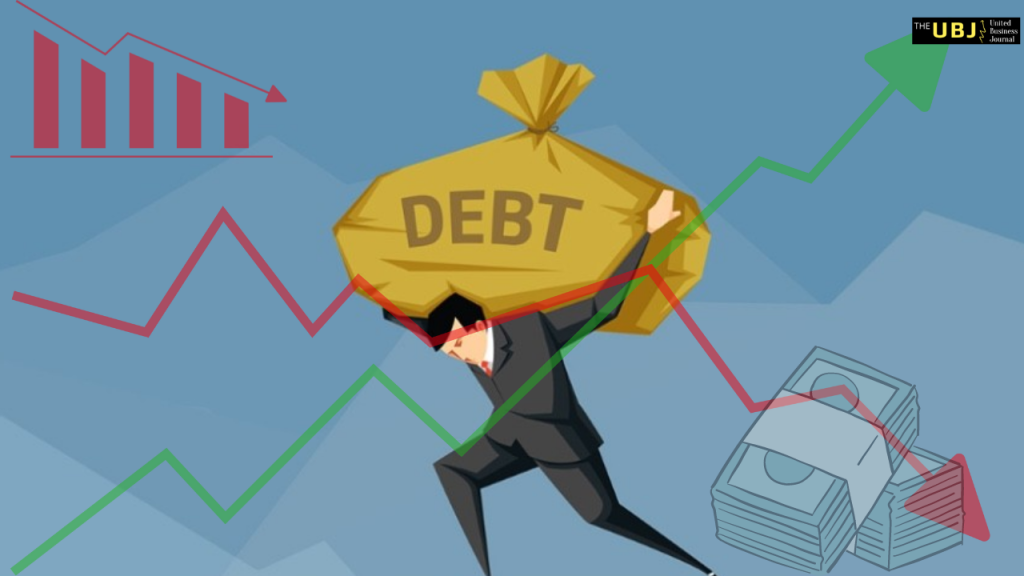Kenneth Rogoff and Carmen Reinhart, scholars at Harvard, emphasized a critical lesson in their renowned book “This Time Is Different: Eight Centuries of Financial Folly.” They underscored that the phrase “This time is different” is often perilous when it comes to a country’s overindebtedness. Throughout history, they argue, overindebtedness has consistently led to economic, banking, or exchange-rate crises unless it is promptly addressed.
The global economic outlook raises concerns not only because of the debt burden of individual major countries but also due to the collective debt problem across the world’s leading economies. Irresponsible budget policies coupled with prolonged periods of low interest rates have exacerbated these challenges, making it increasingly difficult to avert the risk of recession and financial strain.
For instance, the United States, as the world’s largest economy, faces significant fiscal challenges. Despite being in a phase of economic expansion, the country continues to run a substantial budget deficit, amounting to approximately 6% of its gross domestic product (GDP). Projections from the nonpartisan Congressional Budget Office suggest that under current policies, these deficits will persist indefinitely.
This trajectory implies that public debt interest payments will eventually surpass levels seen during World War II relative to the size of the economy. These concerning trends underscore the urgency of addressing fiscal imbalances and implementing prudent economic policies to safeguard long-term economic stability and resilience.
While the U.S. government’s ability to borrow in dollars mitigates the risk of defaulting on its debt, excessive money printing by the Federal Reserve to repay debt obligations could trigger higher inflation and potentially lead to a dollar crisis. This underscores the interconnectedness of fiscal and monetary policy decisions and the importance of prudent economic management.
Moreover, the commercial real estate sector faces its own challenges, particularly with nearly $1.5 trillion in debt maturing over the next two years. Against the backdrop of record vacancy rates post-COVID and higher interest rates, refinancing this debt without significant restructuring poses a considerable challenge.
The potential wave of defaults among regional banks, reminiscent of recent failures like Silicon Valley Bank and First Republic Bank, could have far-reaching implications for the financial system. These developments highlight the importance of addressing systemic risks and implementing measures to enhance financial stability and resilience.
The global economic landscape is fraught with debt challenges, extending beyond individual countries to encompass major economies worldwide. China, once a powerhouse of economic growth, now grapples with a significant debt burden, with credit to its nonfinancial private sector surging to unprecedented levels over the past decade. This trajectory mirrors historical precedents seen in Japan’s lost economic decade and the US Great Recession.
Similarly, Europe faces its own debt predicament, particularly concentrated in the eurozone’s southern countries like Italy and Spain, which struggle with soaring public-debt-to-GDP ratios. Compounded by the constraints of the euro currency, these nations lack the flexibility to deploy independent monetary policies, exacerbating their economic challenges and setting the stage for another round of the eurozone debt crisis.
Meanwhile, Japan’s public debt surpasses 250% of GDP, presenting a looming crisis as the Bank of Japan’s efforts to sustainably finance the government’s debt may falter in the face of rising inflation. As global debt woes converge, the specter of a world economic reckoning looms large, underscoring the urgency for policymakers to address unsustainable debt levels and implement measures to safeguard economic stability.
Without proactive intervention, the trajectory points towards economic turbulence and renewed financial strains, with repercussions reverberating across borders. Mitigating the risk requires a collective recognition of the looming crisis and decisive action to steer towards a more sustainable debt trajectory. Failure to do so could leave economies vulnerable to the fallout of a looming global economic downturn.
